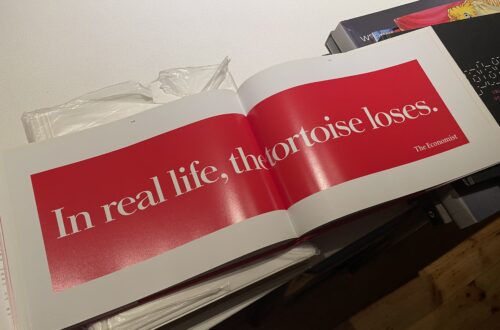Culture | The Santa Dilemma
From Fantasy to Reality: Addressing the Santa Question with Children
What parents can do when they are asked their second most difficult question: Is Santa real?
In an age where information is ubiquitous and childhood innocence is often short-lived, parents inevitably face the delicate task of navigating their children’s evolving understanding of Santa Claus. This transition, a rite of passage in many cultures, is not just about revealing a cherished secret; it encapsulates broader themes of trust, imagination, and preserving childhood wonder.

Ho, Ho, Oh No
As children mature, their perception of the world around them inevitably shifts. Research suggests that a combination of testimony and evidence keeps the belief in Santa alive, with cognitive development eventually leading most children to outgrow the belief naturally. “Children’s belief in Santa Claus is a remarkable example of how testimony and evidence can intertwine to keep a myth alive,” notes developmental psychologist Dr. Jacqueline Woolley, whose research on the subject is widely referenced. This discovery often poses a unique challenge to parents: how to uphold the magic of Christmas while transitioning towards a more nuanced understanding. The key lies not in the binary choice between blunt honesty and perpetuating the myth, but in embracing the spirit of what Santa represents – generosity, kindness, and the joy of giving.
Research indicates that children don’t just blindly believe in Santa; their belief is influenced by what trusted figures like parents say and by evidence supporting his story. “Parents play a crucial role in maintaining the Santa myth. Their endorsement significantly impacts children’s belief,” explains Dr. Thalia Goldstein, co-author of a study on parent promotion of belief in Santa Claus. It’s an opportunity to reinforce developmental aspects, as believing in Santa fosters creativity, encourages moral reasoning, and aids in social and emotional understanding.
Maintaining the Magic
The approach to this transition should be as bespoke as the children themselves. Sensitivity and timing are crucial. In some cases, a gradual unveiling that aligns with the child’s natural questioning may be appropriate, while in others, a direct conversation might be necessary, especially if the child feels betrayed or confused by the revelation.
In navigating this conversation, parents should consider the values behind the Santa mythos. This involves shifting the emphasis from receiving gifts from a mythical figure to the joy of giving and the importance of kindness and generosity. By doing so, parents can preserve the magic of the holiday season while laying the groundwork for their child’s understanding of more complex societal and moral concepts.
The realisation about Santa can also be a teachable moment about critical thinking and the differentiation between literal and metaphorical truths. “The discovery of the Santa myth offers a prime opportunity for parents to discuss the value of traditions and the role of imagination in cultural narratives,” suggests cultural anthropologist Dr. Sarah Hrdy. It’s an opportunity to discuss the importance of traditions, the value of imagination, and the beauty of cultural myths in shaping our understanding of the world.
Moreover, this transition is not just about loss (of belief) but also about gain – the gain of a more mature understanding of the world and a deeper appreciation for the values that Santa Claus embodies. It’s a rite of passage that, when navigated thoughtfully, can enrich a child’s emotional and moral development.
Globally, cultures navigate the leap from childhood myth to adult reality in diverse ways, often reinforcing core values. In Japan, the transition from believing in folklore characters like Santa Claus is often integrated with lessons in societal harmony and respect for others’ beliefs. In Nordic countries, where mythological figures like elves are popular, the shift towards reality is handled with a focus on preserving the magic of folklore while instilling values of nature conservation and community.
When discussing Santa Claus with children, it’s recommended to use specific phrases and approaches that respect the magic of the holiday while introducing a more mature perspective. Parents are advised to emphasise that believing in Santa is a choice, akin to believing in other aspects of life and the beyond. It’s about giving children the autonomy to believe in magic or not, while also promoting the spirit of Santa Claus, which embodies kindness and generosity for all.
Expert Heather Wallace suggests incorporating new Christmas traditions once children learn the truth about Santa. Activities like baking and decorating Christmas cookies and delivering them to a nursing home, help maintain the Christmas spirit and create new memories.
A critical aspect of this transition is guiding older children on maintaining the Santa secret for their younger siblings. It’s important to stress to the older child the significance of allowing their siblings to believe in Santa for as long as possible. They should be cautioned never to say anything that might hint at questioning Santa’s existence to younger siblings or other children.
One approach is to involve the older child in the Christmas preparations, making them a part of the magic. This can include allowing them to help with wrapping gifts or coming up with creative ideas for the “Elf on the Shelf.” Such involvement keeps the spirit of Christmas alive and gives the older child a sense of responsibility and a role in perpetuating the magic of the season for their younger siblings.
Beyond the Beard
Ultimately, the conversation about Santa is about more than just the truth of a man in a red suit. It’s about nurturing a child’s capacity for wonder while guiding them towards a more sophisticated understanding of the world. As such, parents should approach this transition as an integral part of their child’s growth, one that can reinforce values and strengthen the parent-child bond.
Critics argue that believing in Santa might lead children to value good behaviour as a means to a reward rather than as a moral imperative. Yet, others contend that such belief nurtures imagination and joyous childhood memories, forming an integral part of many people’s lives. The ethical debate also touches on the potential impact of the Santa narrative on children’s self-worth, especially in relation to the distribution of gifts.
The end of belief in Santa Claus need not be a moment of disillusionment. Instead, it can be a valuable opportunity to reinforce important life lessons and values. By focusing on the spirit of what Santa represents, parents can help their children navigate this transition smoothly, ensuring that the magic of the holiday season continues, albeit in a different form.
Economissed is a series of articles that the Economissed. Conceived by me, written by a GPT I created, and edited by me.

